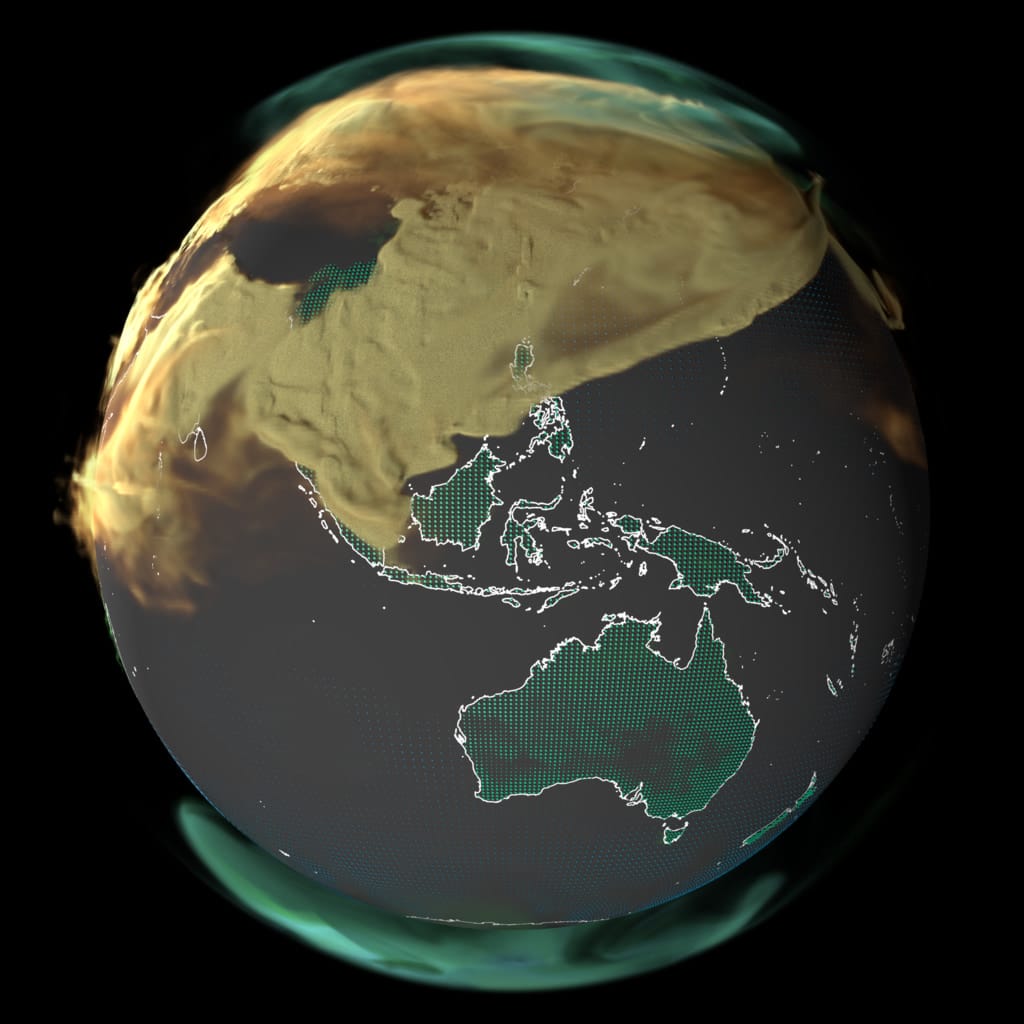The Earth’s atmosphere encapsulates complex layers of gases that sustain life. It serves as a protective shield, allowing essential processes such as photosynthesis and respiration to take place while regulating temperature through the greenhouse effect. A recent analysis has shown that the concentration of carbon dioxide (CO2) in the atmosphere has reached levels unprecedented in millions of years. This surge poses significant concerns for global climate dynamics, ecological balance, and human health.
To understand the implications of the current CO2 concentrations, it is critical to first appreciate the historical context. Ice core samples extracted from Greenland and Antarctica have provided a valuable timeline, revealing that during the past 800,000 years, CO2 levels fluctuated between 180 and 300 parts per million (ppm) due to natural processes such as volcanic eruptions, changes in solar radiation, and the Earth’s orbital variations. However, recent data indicates that atmospheric CO2 levels have surged past 420 ppm, a stark deviation from the natural rhythms of our planet. This elevation is largely attributed to anthropogenic activities, notably the burning of fossil fuels, deforestation, and various industrial processes.
The increase in carbon dioxide is primarily linked to human activities since the dawn of the Industrial Revolution. The extensive reliance on fossil fuels such as coal, oil, and natural gas for energy, transportation, and manufacturing has significantly contributed to this rise. In addition, the clearing of vast forested areas for agriculture and urban development has diminished the Earth’s capacity to absorb CO2, further exacerbating the situation. Consequently, we now experience an atmosphere that has not witnessed such high concentrations of CO2 for millions of years, leading scientists to sound alarm bells regarding the potential for irreversible impacts on the planet.
This unprecedented rise in CO2 levels leads to a series of cascading effects on the climate system. One significant consequence is the intensification of global warming. Carbon dioxide is a greenhouse gas that traps heat within the Earth’s atmosphere, leading to an increase in global temperatures. The Intergovernmental Panel on Climate Change (IPCC) has outlined that even a modest increase in global mean temperature raises the likelihood of extreme weather events, such as hurricanes, droughts, and floods, which can have devastating impacts on ecosystems and human populations.
Additionally, higher levels of CO2 contribute to ocean acidification. When CO2 is absorbed by ocean waters, it reacts chemically to form carbonic acid, which lowers the pH of the water. This alteration poses significant threats to marine life, particularly organisms like coral and shellfish that rely on calcium carbonate for their structural integrity. The dissolution of coral reefs, which serve as essential habitats for diverse marine species, would disrupt numerous food chains and diminish biodiversity.
Furthermore, the current levels of atmospheric CO2 have far-reaching implications for agriculture and food security. The alteration in climate patterns can affect growing seasons, crop yields, and water availability. As temperatures rise and weather patterns become increasingly erratic, farmers face the daunting challenge of adapting to an environment that is no longer predictable. This scenario may lead to increased food prices and heightened competition for resources, exacerbating socio-economic disparities in various regions of the world.
In response to these growing concerns, efforts are underway globally to mitigate the impacts of rising CO2 levels. The Paris Agreement, an international treaty adopted in 2015, aims to limit global warming to well below 2 degrees Celsius above pre-industrial levels. Nations are being urged to adopt more sustainable practices, such as transitioning towards renewable energy sources like solar and wind power, implementing energy efficiency measures, and fostering practices that increase carbon sequestration in forests and soils.
In addition to policy efforts, scientific research continues to explore innovative solutions to address the challenges posed by high CO2 levels. Advances in technology, such as carbon capture and storage (CCS) methods, are being developed to directly capture CO2 emissions from industrial sources before they enter the atmosphere. Various carbon reduction strategies are also being researched, highlighting the importance of a collaborative approach that engages governments, businesses, and communities to foster a collective response to this critical issue.
In conclusion, Earth’s atmosphere is currently experiencing an unprecedented increase in carbon dioxide, reaching levels not seen for millions of years. This significant rise, primarily driven by human activities, poses considerable risks to climate stability, marine ecosystems, and global food security. Collective action aimed at mitigating these impacts is essential for promoting environmental sustainability and ensuring the resilience of both human and natural systems. As we navigate this complex challenge, it remains vital to foster awareness, understanding, and proactive responses to safeguard the planet’s future.



